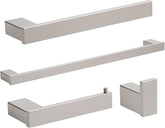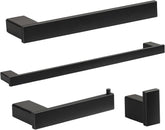Pipe Installation Pitfall Guide for European Homes: Mistakes to Avoid When
installing pipes in European homes, many families end up dealing with leaks, rust, and cracks—even after choosing expensive materials. The problem usually lies in "missing key details during installation." For example, homeowners in Southern Europe might overlook the humid climate and pick ordinary steel pipes, which rust within two years; neighbors in Northern Europe might cut corners with low-quality seals, leading to leaks once winter freezes set in. As a brand specializing in the European market, KLABB’s pipes and vacuum hoses help you avoid these pitfalls from the start. Below, we’ll break down common mistakes and share how to install pipes hassle-free.
1. 3 Common Installation Pitfalls Every Beginner Should Watch For
1.1 Mismatching Climate and Pipe Material—Wasting Money on Short-Lived Pipes
Europe’s north-south climate difference is extreme: Northern Europe sees winter temperatures as low as -20°C, and regular PVC pipes will eventually crack in the cold; Southern Europe’s year-round humidity causes cheap steel pipes to rust and leak quickly.
How to Avoid It: Choose KLABB’s climate-specific materials directly. For Northern Europe, go for KLABB’s 304 stainless steel pipes—they’re freeze-resistant, crack-proof, and won’t become brittle in low temperatures. For Southern Europe, opt for KLABB’s lead-free brass pipes—they have built-in antibacterial properties, resist corrosion in humid conditions, and comply with EU drinking water safety standards, so you won’t have to worry about harmful substances leaching into your water.
1.2 Cutting Corners on Joint Sealing—Costly Leak Repairs Later
Most European homes use embedded pipes. If joints aren’t sealed properly (e.g., too few wraps of Teflon tape, wrong-sized gaskets), water will seep into walls or under floors. Fixing this means tearing down walls or breaking concrete—costing more than the original pipe installation.
How to Avoid It: Use the "double-layer sealing kit" included with KLABB pipes. First, wrap 5 clockwise turns of KLABB’s dedicated Teflon tape (30% thicker than regular tape for better sealing). Then, attach the food-grade silicone gasket (perfectly compatible with European standard pipe diameters). Finally, gently tighten with a wrench until it’s "snug but not slipping"—no need to over-tighten, as this can deform the joint.
1.3 Skipping Post-Installation Cleaning—Clogged Pipes Down the Line
Some installers only wipe the surface after finishing. Dust and debris left inside pipes get washed into the system, clogging showers or faucets over time. This is even worse in parts of Europe with hard water—debris mixes with limescale, accelerating pipe aging.
How to Avoid It: After installation, grab aKLABB vacuum hose (compatible with most European vacuum cleaners), attach the slim suction head, and suck out debris from pipe openings and sink gaps. Then, run water for 30 seconds to flush residual particles from the pipes. Finally, use the hose to clean up tool scraps on the floor—this ensures smooth use later.
2. KLABB’s "Installation Helpers"—Even Beginners Can Install Correctly
Beyond pipes, KLABB includes a "European Home Installation Kit" that’s incredibly useful. It has labeled Teflon tape (so you know exactly how many wraps to use), a diameter measurement card (no guessing pipe sizes), and a non-slip wrench (prevents slipping and damaging joints). The manual also marks pipe standards for different countries (e.g., Germany’s DIN, France’s NF)—even if you’re installing DIY, you’ll meet local requirements perfectly, no more "wrong model" or "incorrect installation" headaches.
In fact, installing pipes in Europe doesn’t require complicated skills. The key is to "choose the right products + avoid small pitfalls." KLABB designs everything—from materials to seals to post-installation cleaning—around Europe’s climate and standards. Follow this guide, and your pipes will be installed correctly the first time, so you won’t have to stress about repairs later.





